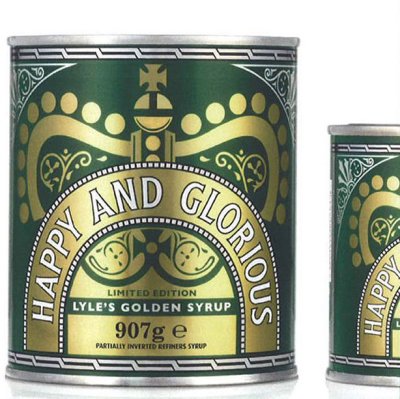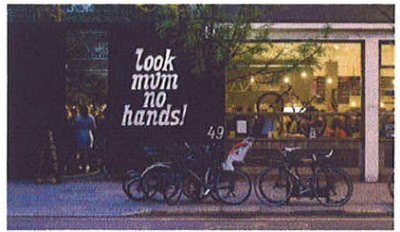We recently published this year's Design Effectiveness Awards (DEAs) case studies on warc.com. These awards recognise design projects that are both creatively and commercially effective. To give you a taster of what the DEAs have to offer, I’ve selected a handful of case studies that I think deserve a special mention. (Warc subscribers can browse all 64 winners of the 2014 awards here.)
Read on to learn how a pharmaceutical brand used effective design to shift its product from niche to mainstream, or how a food brand drove brand differentiation by adding a new functional element to its design (the Spoonkler) and so fulfilling an unmet consumer need.
BEAR, a dried fruit brand, created brand differentiation by focusing on stripped back ingredients. Its products contain no added sugar, preservatives, concentrates, stabilisers and no harmful pesticides – a rarity in the category. The BEAR character was created and given a straight-talking, offbeat and humourous tone of voice. This “with no added nonsense” brand identity helped BEAR, a challenger brand, achieve rapid sales growth from £0 to £6.4m in 3 years and increased distribution from fewer than 500 to more than 1,000 stockists. Unsurprisingly, BEAR won the DEA Grand Prix: the character receives about 100 letters a week from young fans.

Tesco: Everyday Value packaging - Redefining a sector to meet new needs
Tesco, the UK supermarket, redesigned its Value product range to overcome consumers’ negative perceptions of value food products, to reduce the stigma of buying value items and to reassure shoppers of the brand’s commitment to high standard food production. The renaming from Tesco Value to Everyday Value helped ‘normalise’ the purchase of value items, while the redesign used the packaging to reassure consumers about the quality of the product, with attributes on each pack. The redesign appealed to price conscious shoppers: during the 18 weeks after the relaunch, Tesco’s Everyday Value sales rose like for like by 9.8% against a market average of 3.3%.

Help Remedies: How Help Remedies turned the pharmaceutical aisle on its head
“If you change the tone of an industry, you change everything else”, says Nathan Frank, co-founder of Help Remedies, a US based boutique pharmaceutical company which was launched in 2008. Staid and confusing, the pharma industry is arguably ripe for disruption. Unlike its well established competitors, this challenger brand differentiated itself by producing products that contain zero artificial coatings or dyes. With this unique USP, the goal was to take the brand from niche to mainstream, with ambitions for global expansion. This stripped-back approach saw Help achieve a 1,000% increase in sales in 2011 and a 94% sales increase in 2012.

Eat 17, a family-run bistro in East London, knew it had a special product when customers began demanding their own jars of Bacon Jam to take home. But how does a challenger brand market an unfamiliar product in an intensely competitive category and charge a premium price? Find out how the brand's quirky design and emphasis on the product’s versatility and brand story helped secure orders from Tesco, Waitrose, Booths Supermarkets and farm shop distributor, Cotswolds Fayre. There was 250% uplift in sales in the 10 months following the launch of the new designs and other Bacon Jam variants have been developed.

Royal Mail used the 2012 London Olympic Games to reinvigorate stamp collecting and improve brand equity. Royal Mail and design agency, True North, created a commemorative stamp for each Gold Medal win by the GB Olympic and Paralympic teams and made them available by lunchtime the following day. As close to immediacy or real-time marketing as stamp production gets: what is usually an 18 month process was condensed into 24 hours or less. Each stamp design focused on the moment of triumph. The campaign exceeded its sales objectives; it also attracted new customers, especially women and young people. The campaign generated lots of PR coverage and aided goodwill towards the brand.

Lyle's Golden Syrup: Happy and Glorious
Tate & Lyle, the golden syrup brand, used the Queen’s diamond jubilee celebration in 2012 as a way of reinforcing its iconic brand equity, and British heritage. A brand that has remained largely unchanged since 1884, the commemorative design replaced the brand name with the equally familiar, unmistakable (and very British) ‘Happy and Glorious’. Available for three months only, the limited edition pack helped deliver a 29% increase in sales and 4.9% increase in market share.

To create brand differentiation and engage with consumers at point of purchase, Bart Ingredients Company, the herbs and spices brand, repositioned as the expert in ingredients, aiming to become the go-to brand for expert and creative cooks. The new product design has a functional mechanism – the ‘Spoonkler’, a dual feature flip cap enabling the consumer to sprinkle or spoon. With an educational tone, the pack copy encourages engagement with the brand on the Bart website.

Look Mum No Hands! cafe branding
Look Mum No Hands! is a bicycle workshop and café-bar, located in London. The founders wanted to create a friendly, relaxed space for London’s growing cycling community but have equal appeal to local workers, residents and passers-by. The brand name captured the inclusive, nostalgic and informal quality the owners wanted to create. The launch generated lots of earned PR, first in the UK and even earned international coverage. The shop now sells branded products from cycling caps to cups and t-shirts. LMNH! merchandise has been sold in 24 countries around the world – a local brand that has achieved global appeal. Look Mum No Hands! have also added pop-up cafes to its portfolio.

Heritage, provenance and localism, were recurring themes in this year’s DEA’s, particularly within the food and drinks category. If this is a strategy that you are interested in then check out Plymouth Gin, Chatham Islands Food Co and Sacred Distillery, among others.

